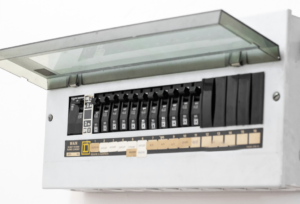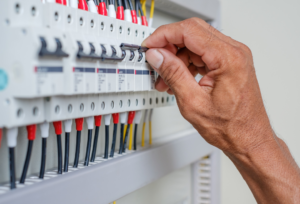Tripped Circuit Breaker? Discover The 4 Most Common Culprits and Easiest Fixes

The sudden plunge into darkness caused by a tripped circuit breaker can be a frustrating experience. But before you start fumbling for flashlights, it’s important to understand why this happens. Tripped circuit breakers are actually a safety feature, designed to protect your electrical system from overload or malfunctions. Let’s delve into the most common reasons why circuit breakers trip:
- Circuit Overload: This is the heavyweight champion of tripped circuit breakers. It occurs when you demand more power from a single circuit than it’s designed to handle. Picture this: you’re running the microwave, vacuum cleaner, and hairdryer simultaneously. This can overwhelm the circuit, causing the breaker to trip and cut off power to prevent overheating and potential fire hazards.
- Appliance Overload: Even a single appliance can be the culprit. Sometimes, a faulty appliance can draw excessive current, tripping the breaker on the circuit it’s connected to. Unplug appliances one by one and reset the breaker after each to identify the troublemaker.
- Short Circuit: This is an electrical party crasher. It happens when a hot wire makes unwanted contact with a neutral wire or ground wire. This unexpected connection creates a surge of current, tripping the breaker to prevent damage. Damaged cords, faulty outlets, or moisture exposure can all lead to short circuits.
- Ground Fault: Similar to a short circuit, a ground fault occurs when a hot wire touches a grounded surface, like a metal appliance casing. This creates a potential shock hazard and requires immediate attention from a qualified electrician.
Remember: Safety First!
Troubleshooting a tripped circuit breaker can be done safely. Here’s what you can do:
- Locate the Culprit: Find your home’s electrical panel. The tripped breaker switch will be in the “off” position, possibly with a red indicator.
- Reduce the Load: Before resetting, unplug unnecessary appliances on the affected circuit.
- Reset with Caution: Locate the tripped breaker and firmly push the switch to “on.” If it flips back off immediately, there’s likely a more serious issue.
When to Call a Pro:
If the tripped circuit breaker becomes a frequent visitor, if you suspect a ground fault, or if you’re unsure about the cause, don’t hesitate to call a licensed electrician. Electrical problems can be dangerous, and attempting DIY fixes can worsen the situation.
Do You Still Have A Tripped Circuit Breaker? Don’t Let Darkness Win!
By now, you’ve armed yourself with knowledge about the most frequent culprits behind tripped circuit breakers. Whether it’s overloading a circuit with too many appliances or a single malfunctioning device hogging the power, you can often identify and address the issue yourself.
However, electrical problems can be tricky. Sometimes, the cause isn’t as clear-cut. Perhaps the culprit is a hidden short circuit lurking within your walls, or a potential ground fault posing a safety hazard. In these cases, it’s crucial to seek the expertise of a licensed electrician.
Remember, attempting DIY fixes for complex electrical issues can be dangerous and lead to further damage. Don’t risk your safety or worsen the problem. By calling a qualified electrician like Ryan Electric you’ll gain the peace of mind that comes with a professional diagnosis and solution. Our team can pinpoint the exact cause of the tripped circuit breaker, fix it efficiently, and ensure your home’s electrical system functions safely and reliably, keeping the lights on and your appliances running smoothly.
Contact Us Today
But for anything beyond a simple reset, or if you have concerns about your electrical system’s safety, call Ryan Electric, Your Local Kansas City Electrician. Our team of experts can diagnose the problem, fix it efficiently, and ensure your home’s electrical system functions safely and keeps the lights on!


